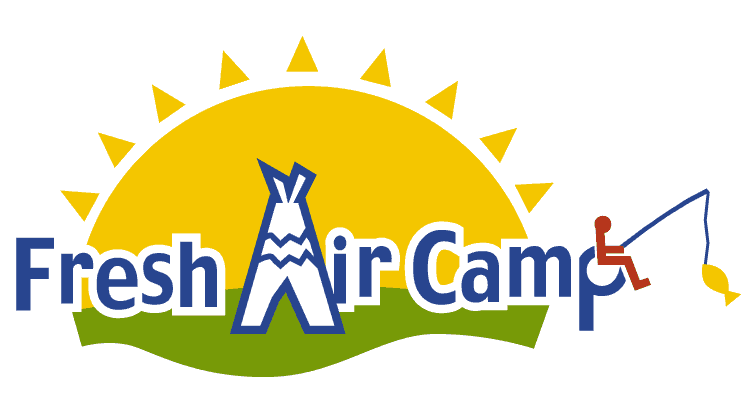IVUN
INTERNATIONAL VENTILATOR USERS NETWORK
an affiliate of Post-Polio Health International
CONNECTING
VENTILATOR USERS,
HEALTH PROFESSIONALS,
AND INDUSTRY
IVUN
INTERNATIONAL VENTILATOR USERS NETWORK
an affiliate of Post-Polio Health International
VENTILATOR-ASSISTED LIVING
VOLUME 38, NUMBER 2
MAY 2024

Camp Inspiration, located at Double H Ranch in New York's Adirondack Park, is a family program designed for campers aged 5-21 years old who require respiratory assistance, such as BIPAP, CPAP, supplemental oxygen, or are ventilator dependent. Held annually, Camp Inspiration gives campers and families the opportunity to participate in activities such as swimming, the high ropes course, arts and crafts, talent shows, and sharing stories around the campfire. IVUN spoke with Chris Woll, MD, Medical Director of Double H Ranch, and Suzanne Barry, DO, Director of Camp Inspiration, to learn more about the Camp Inspiration experience ...................................................MORE
CONNECTING
VENTILATOR USERS,
HEALTH PROFESSIONALS,
AND INDUSTRY
Several organizations will once again be offering summer camps for ventilator-assisted children. IVUN has gathered the latest details below. This information is subject to change, so be sure to check their website or Facebook pages for the latest updates .............................................................................................MORE
ADDITIONAL SECTIONS
Advocacy
Educate, discuss, take action
Recent Relevant Publications
Summaries, links to selected professional, disability, disease journals and newsletters
Educational Opportunities
Conferences and webinars for health professionals and ventilator users
Industry
The business of living with a ventilator
Ventilator-Assisted Living
Vol. 38, No. 2, May 2024
Editor: Brian Tiburzi
Designer: Brian Tiburzi
ISSN 1066-534X
© 2024 Post-Polio Health International.
Permission to reprint must be obtained from Post-Polio Health International (PHI) at info@post-polio.org.
Ventilator users, health professionals, non-profits, company representatives – send comments and updates to info@ventusers.org.
Camp Inspiration:
A summer oasis for ventilator-assisted youth
Camp Inspiration, located at Double H Ranch in New York's Adirondack Park, is a family program designed for campers aged 5-21 years old who require respiratory assistance, such as BIPAP, CPAP, supplemental oxygen, or other respiratory device. Held annually, Camp Inspiration gives campers and families the opportunity to participate in activities such as swimming, the high ropes course, arts and crafts, talent shows, and sharing stories around the campfire.
Since the Double H Ranch officially opened its doors on July 4, 1993, it has served over 80,000 children dealing with life-threatening illnesses from around the world. It was the second “Hole in the Wall Camp” in what has become a worldwide network of not-for-profit recreational and therapeutic experiences for children with serious illness, called the SeriousFun Children’s Network.

Courtesy Double H Ranch
IVUN spoke with Chris Woll, MD, Medical Director of Double H Ranch, and Suzanne Barry, DO, Director of Camp Inspiration, to learn more about the Camp Inspiration experience.
IVUN: Tell me a bit about Camp Inspiration and Double H Ranch and how it got started?
Chris Woll: The Double H Ranch was created as a joint vision between movie icon Paul Newman and local entrepreneur Charlie Wood. This was the second camp in what came to be known as the SeriousFun Children’s Network, which is an organization founded by Paul Newman aiming to provide camping experiences to children suffering from serious illnesses free of charge. Now there are over 30 domestic and international camps and programs within the SeriousFun Children’s Network.
Camp inspiration started in 2002 with the vision of Dr. Ray Walsh, a Pediatric ICU physician, in an effort to provide a safe summer camp experience for children in need of respiratory assistance. This program is held at the Double H Ranch for children between 5 years and 21 years of age requiring assistance, such as supplemental oxygen, CPAP, BIPAP, or a ventilator. The child’s family is welcome to join for this program free of charge.
IVUN: What are some of the benefits of attending camp for ventilator-assisted children?
Suzanne Barry: Children who come to Camp Inspiration are among some of the most isolated children due to the complexity of their day-to-day medical management. At heart, they are just like any other children who want to see others like themselves to feel included and accepted. Camp allows them a setting where they can do this, meeting other children and families like their own while participating in various activities, many of which are new to them and previously thought unattainable, including swimming and zip-lining! We have seen the camp experience and relationships formed while at camp carry these children through the year with renewed excitement of something to look forward to.

Courtesy Double H Ranch
IVUN: What does a typical day look like at Camp Inspiration?
Chris Woll: A typical day for the campers include meal times in the dining hall with the entire camp community followed by a day of programming including activities such as fishing, boating, swimming, petting small animals, team sports, and the high ropes course. After dinner, there is usually a camp-wide activity that everyone can participate in such as campfires, game night and the talent show.
IVUN: What type of support staff does the camp have on site?
Chris Woll: The number one goal of Camp Inspiration is to provide a safe experience for the campers and their families. In order to provide a safe experience, we always have our general non-medical staff, nurses, respiratory therapists and pediatric critical care or emergency medicine physicians present on site.

Courtesy Double H Ranch
IVUN: How have advances in ventilator technology and medical care impacted the camp experience over the years?
Suzanne Barry: Advances in ventilator technology have given opportunities to children to attend camp who may have not otherwise been able to in the past. Over time, portable ventilators have been improved to meet the needs of various sized children allowing for earlier transition from hospital-grade ventilators that historically was not always possible. Simplification of the ventilators to include features such as built-in airway clearance techniques have allowed children at camp to continue their preventative regimens in a less invasive manner so that the camp experience has few interruptions.
For information about how to attend Camp Inspiration, see our Camp Offerings below or visit www.doublehranch.org/programs/summer-camp/camp-inspiration/.
Camp Offerings for
Ventilator-Assisted Children
Several organizations will once again be offering summer camps for ventilator-assisted children. IVUN has gathered the latest details below. This information is subject to change, so be sure to check their website or Facebook pages for the latest updates.
CAMP INSPIRATION
Camp Inspiration is a family program in Lake Luzerne, New York, for children (ages 5-21 years old) who are BIPAP or ventilator dependent. This year's camp will take place June 12-16. Additional details are available on their website.
CAMP PELICAN
Camp Pelican is a week-long overnight resident camp for children with pulmonary disorders-such as but not limited to severe asthma, cystic fibrosis, tracheotomy and ventilator assisted children. The 2023 session is scheduled for May 26 - June 1. Applications are available online.
CHAMP CAMP
CHAMP Camp provides a summer camp experience in Martinsville, Indiana, for children and adolescents age 6-18 with tracheostomies and those who require technological respiratory assistance. Activities include zip lining, swimming, canoeing and climbing that encourage independence, confidence and self-esteem to create memories that last a lifetime. This year's camp will take place June 16-20. For more information visit champcamp.org, call 317-679-1860, or email admin@champcamp.org.
FRESH AIR CAMP
Fresh Air Camp is a 6-day, overnight camp for children with tracheostomies or respiratory technology needs held every June in Ohio. This year's camp is scheduled for June 9-13 in Chagrin Falls, Ohio. More details are available at www.freshaircamp.org.
PA VENT CAMP
PA Vent Camp is a week-long summer camp held in June each year and is open to children ages 5 to 18 who use any sort of mechanical ventilation (ventilators, BiPAP, or CPAP). Hosted on the fully-accessible grounds of Camp Victory in Millville, PA, campers have access to a zip-line, rock wall, pond, pontoon boat, tree house, wildlife center, board games, and arts and crafts. This year's camp is scheduled for June 22-27. Find out more on their website or contact 717-531-5338 or info@paventcamp.org.
ADVOCACY
CMS Finalizes New Rule for Home and Community-Based Services
The Centers for Medicare and Medicaid Services (CMS) have finalized a new rule, “Ensuring Access to Medicaid Services,” or the Access Rule, aimed at strengthening home and community-based services for individuals with disabilities. This rule entails setting minimum payment thresholds for direct care providers, mandating states to annually reassess the needs of recipients, and implementing other measures to bolster the direct support professional workforce. It is a response to the increasing trend of individuals with disabilities residing in community settings rather than institutions.
Under the measure, at least 80% of Medicaid payments for homemaker, home health aide and personal care services must go toward compensation for direct care workers as opposed to administrative overhead with limited exceptions. States will also have to report on a standardized set of quality measures, as well as how they establish and maintain their waiting lists and the timeliness of service delivery.
Biden Administration Calls for Significant Increase in Funding for Home and Community-Based Services
In his State of the Union address last month, President Biden called for a large increase in funding for home and community-based services. “Imagine a future with home care and eldercare, and people living with disabilities can stay in their homes and family caregivers can finally get the pay they deserve,” he said in the speech.
He followed this up by including $150 billion over 10 years for home and community-based services in his budget request for 2025. Budget requests are largely just a wish list of a president's priorities, however. It will fall on Congress to determine what will ultimately be included in the federal budget for the upcoming year.
Insurer Delays and Denials Hamper Patients Seeking Home Ventilators, According to Report
According to a recent report by the Associated Press, some physicians and patients are finding that insurers are imposing greater challenges on patients seeking to acquire home mechanical ventilation. Insurance rejections have become more common for patients, particularly those with advanced cases of chronic obstructive pulmonary disease, according to Chuck Coolidge, Chief Strategy Officer for VieMed, a respiratory equipment provider.
Dr. Lisa Wolfe, a professor at Northwestern’s Feinberg School of Medicine, attributes the rise in coverage problems to technological advancements that have made ventilators easier to use, resulting in their expanded use for conditions that are not immediately life-threatening. She suggests that insurers may be responding to this increased utilization. Federal spending on ventilators through Medicare surged from approximately $3 million to nearly $269 million between 2009 and 2017, as reported by the U.S. Department of Health and Human Services Office of Inspector General. Read more here.
RECENT RELEVANT PUBLICATIONS
A history of home mechanical ventilation: The past, present and future
D'Cruz RF, Hart N.
“This state-of-the-art review provides an overview of the history of home mechanical ventilation (HMV), including early descriptions of mechanical ventilation from ancient and Renaissance perspectives and the mass development of ventilators designed for long-term use during the poliomyelitis epidemic. Seminal data from key clinical trials supports the application of HMV in certain patients with chronic obstructive pulmonary disease, neuromuscular disease and obesity-related respiratory failure. Innovative engineering coupled with refined physiological understanding now permits widespread delivery of home mechanical ventilation to a global population, using portable devices with advanced ventilatory modes and telemonitoring capabilities. Exponential growth in digital technology continues, and ongoing research is needed to understand how to harness clinical and physiological data to benefit patients and healthcare services in a clinically- and cost-effective manner.”
Chron Respir Dis. 2024 Jan-Dec. doi: 10.1177/14799731241240776.
Characteristics and outcomes in children with congenital central hypoventilation syndrome on long-term mechanical ventilation in the Netherlands
Evers-Bikker EE, de Weerd W, Wijkstra PJ, Corel L, Verweij LP, Vosse BAH.
“Congenital central hypoventilation syndrome (CCHS) is a rare condition characterized by central hypoventilation, leading to the majority of patients being dependent on ventilatory support during sleep. This condition is often accompanied by various associated symptoms, due to a PHOX2B gene variant involved in neuronal crest cell migration. This study is the first to review the characteristics and outcomes in children with CCHS on long-term mechanical ventilation in the Netherlands. We performed a retrospective study of all CCHS patients treated in the 4 Centers of Home Mechanical Ventilation of the University Medical Centers in the Netherlands from 2000 till 2022 by collecting information from the electronic medical records, documented during follow-up. We included 31 patients, out of which 27 exhibited a known genetic profile associated with CCHS, while no PHOX2B variant was identified in the remaining patients. Among the 27 patients with known genetic profiles, 10 patients had a non-polyalanine repeat expansion mutation (NPARM), followed by 20/27, 20/25, and 20/26 polyalanine repeat expansion mutations (PARMs) in descending order. The most common presentation involved respiratory failure or apneas during the neonatal period with an inability to wean off ventilation. The majority of patients required ventilatory support during sleep, with four patients experiencing life-threatening events related to this dependency. Daily use of ventilatory support varied among different genetic profiles. All genotypes reported comorbidities, with Hirschsprung's disease and cardiac arrhythmias being the most reported comorbidities. Notably, Hirschprung's disease was exclusively observed in patients with a 20/27 PHOX2B variant.”
Eur J Pediatr. 2024 Feb;183(2):791-797. doi: 10.1007/s00431-023-05339-9.
Timing initiation of non-invasive ventilation in management of ALS
Swash M.
“Non-invasive positive pressure ventilation (NIV) has become a widely accepted mode of management for ventilatory failure due to the otherwise fatal combination of upper and lower motor neuron weakness in amyotrophic lateral sclerosis (ALS). In most clinics NIV is commenced when there is evidence of respiratory failure, usually defined as a forced vital capacity (FVC) <50% predicted or a maximal inspiratory pressure (MIP) > minus 60 cm water. Slight variations around these criteria are also in use, but measurement of oxygen saturation in arterial blood, or pCO2 levels are not used as criteria since they can be affected by many factors other than respiratory muscle performance. These simple measurements of respiratory muscle performance do not require any attempt to define underlying neurological factors, whether UMN, LMN or a disorder of central respiratory drive; all possible features of ALS. They do not necessarily require assessment of any possible associated pulmonary disease and their simplicity makes them generally applicable. Other, more complex tests, such as diaphragmatic EMG studies and arterial blood oxygen or CO2 measurements have also been considered, but these introduce a level of complexity that should perhaps be avoided and they do not directly assess respiratory muscle force, which is mainly due to diaphragmatic weakness, the primary dysfunction causing respiratory failure in the disease.”
J Neurol Sci. 2024 Apr 15;459:122972. doi: 10.1016/j.jns.2024.122972.
EDUCATIONAL
OPPORTUNITIES
ATS 2024
The ATS 2024 International Conference will be held in San Diego, California, May 17-22, 2024. More information can be found on the conference website.

2024 CCHS FAMILY CONFERENCE

This year's CCHS Family Conference will take place in Newport Beach, California, June 26-28, 2024, at the Newport Beach Renaissance Hotel. Register online.
CHEST 2024

CHEST 2024 will be held in Boston, Massachusetts, October 6-9, 2024. Registration is not yet open, but hotels may be booked through a link on their site. The meeting promises to deliver the most up-to-date education in clinical pulmonary, critical care, and sleep medicine with world-class speakers, hands-on simulation opportunities, interactive educational games, and much more.
INDUSTRY
Philips settles for $1.1 billion over ventilator recall issue
Philips has agreed to pay $1.1 billion to settle hundreds of personal injury lawsuits in the U.S. related to its defective devices. The settlement also covers medical monitoring claims for potential future risks. These machines were recalled globally due to the breakdown of internal foam, causing users to inhale particles and fumes. The company, while not admitting fault, reached the settlement to address uncertainties and frustrations caused by delays in repairing or replacing the machines. This settlement marks a significant step in resolving one of the largest medical device recalls in history, which has been ongoing for nearly three years.
The settlement follows a separate $479 million settlement reached in September over economic losses to the patients and medical equipment sales companies that financed replacement devices. Philips also agreed to a consent decree with the FDA earlier this year that forced the company to halt U.S. sales of new devices until certain conditions are met.



